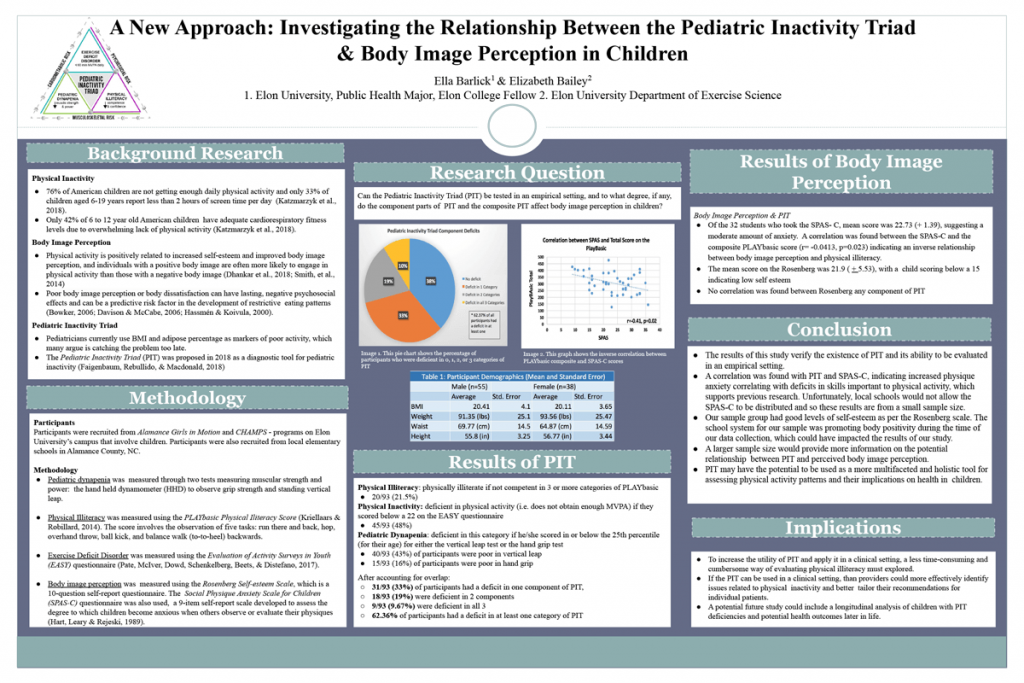Ella Barlick
Class of 2020
- Public Health Studies

A New Approach: Investigating the Relationship Between the Pediatric Inactivity Triad and Body Image Perception in Children
Project Mentor:
- Elizabeth Bailey, lecturer in exercise science
Project Abstract
The World Health Organization recommends that children aged 5-17 should acquire 60 minutes of moderate to vigorous physical activity (MVPA) a day, yet studies show that few children actually attain this minimum. The Pediatric Inactivity Triad (PIT), consisting of physical inactivity, pediatric dynapenia, and physical literacy, has been proposed as a way to assess the consequences of insufficient activity in children. To date, the PIT has been largely understudied and the relationship between PIT and body image perception in children has not been examined. Therefore, the purpose of this study was to evaluate the existence of PIT and examine its potential relationship to body image perception in children of Alamance County, NC. Subjects (N=93) were recruited from Elon University programs that target grades 3rd-5th, as well as from local elementary schools. Once parental consent and participant assents were obtained, handgrip strength and standing vertical leap were used to assess pediatric dynapenia. Physical literacy was assessed using the PLAYbasic Physical Literacy Score (PLAYbasic), requiring evaluation of five motor tasks. Physical inactivity was measured using the Evaluation of Activity Surveys in Youth (EASY) questionnaire, and body image perception was evaluated using the Social Physique Anxiety Scale for Children (SPAS-C) (N=32), and the Rosenberg Self-esteem scale (SE). The SPAS-C is a better measure of perceived body image, but local schools would not allow the questionnaire to be administered, limiting its contribution to our analysis to a small subset of participants. Results indicated that 62% of participants showed a deficit in at least 1 category of PIT, with 9% showing deficits in all categories of PIT. No significant correlations were found between the PIT and SE, however, a negative correlation was found (r value = -0.413) between SPAS-C and the composite PLAYbasic score (p-value = 0.023), indicating increased physique anxiety correlating to deficits in physical literacy. The results of this study verify the existence of PIT and its ability to be evaluated in an empirical setting. However, due to constraints applied by the school system, it was difficult to determine a relationship between body image perception and PIT, and thus further research is needed.
 Download Project Presentation
Download Project Presentation